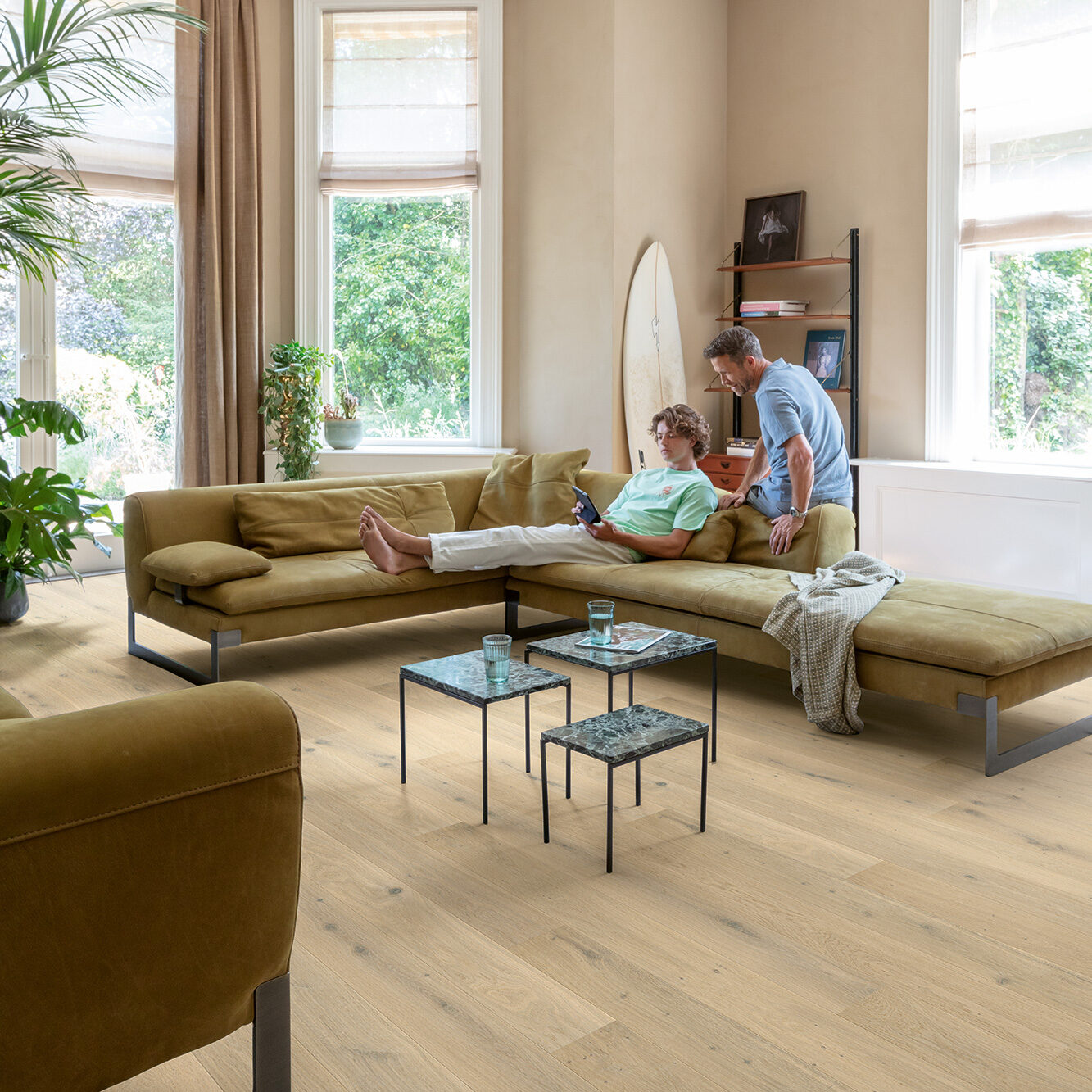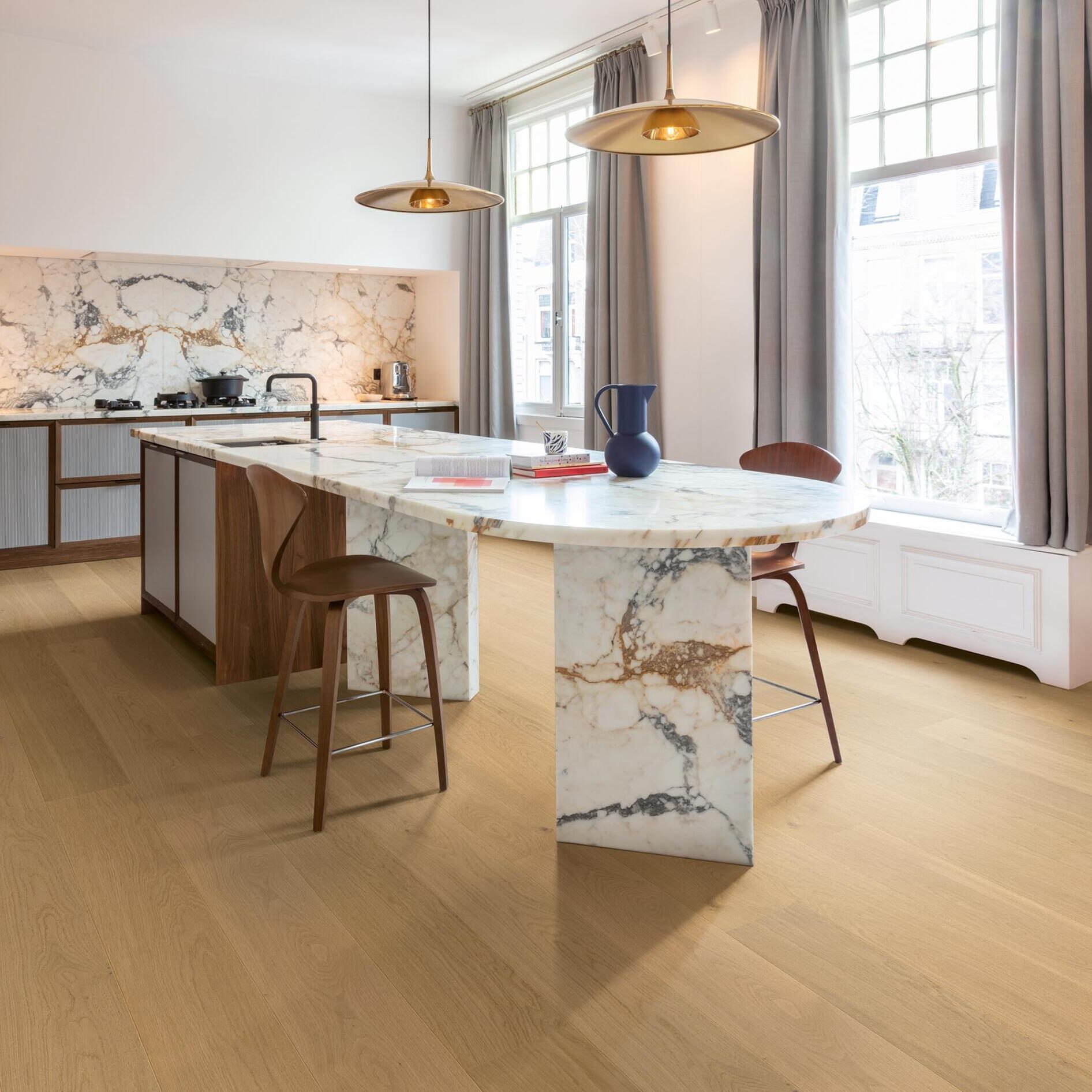
1850mm x 137mm x 14mm

1850mm x 137mm x 14mm
*Check with your local building regulations or certifier for suitability in bathrooms and laundries.
Engineered timber flooring consists of a top layer of real hardwood (often referred to as the veneer layer) bonded to multiple layers of plywood or high-density fiberboard (HDF) underneath. These layers are arranged in a cross-grain configuration, which increases the stability and durability of the flooring compared to solid hardwood.
Engineered timber flooring is designed to be more stable and resistant to changes in temperature and humidity than solid wood flooring. The top layer of hardwood provides the same look and feel as traditional wood, while the underlying layers add structural integrity, making it less prone to warping, cupping, or shrinking.
While engineered timber flooring offers better resistance to moisture compared to solid wood, it is not usually fully waterproof. There are some range that offer exceptions to this rule. The plywood or HDF core provides some protection against moisture, but prolonged exposure to water can still cause damage. It’s suitable for use in areas with moderate humidity, such as kitchens or basements, but not in fully wet areas like bathrooms.
Engineered timber flooring can be installed using various methods, including floating (click-lock), glue-down, or nail-down installation. The floating method is often the easiest and most common, allowing for quicker installation over most subfloors, including concrete, tile, or existing wood.
Engineered timber flooring offers a similar level of comfort underfoot as solid hardwood, with a natural warmth and slight cushioning, depending on the underlayment used. It can also provide better sound insulation compared to harder surfaces like tile.
The top veneer layer of engineered timber flooring is made from real wood, giving it the same authentic appearance as solid hardwood. It comes in various wood species, finishes, and textures, allowing for a wide range of aesthetic options. Since the top layer is real wood, it can often be sanded and refinished, though the number of times this can be done depends on the thickness of the veneer.
